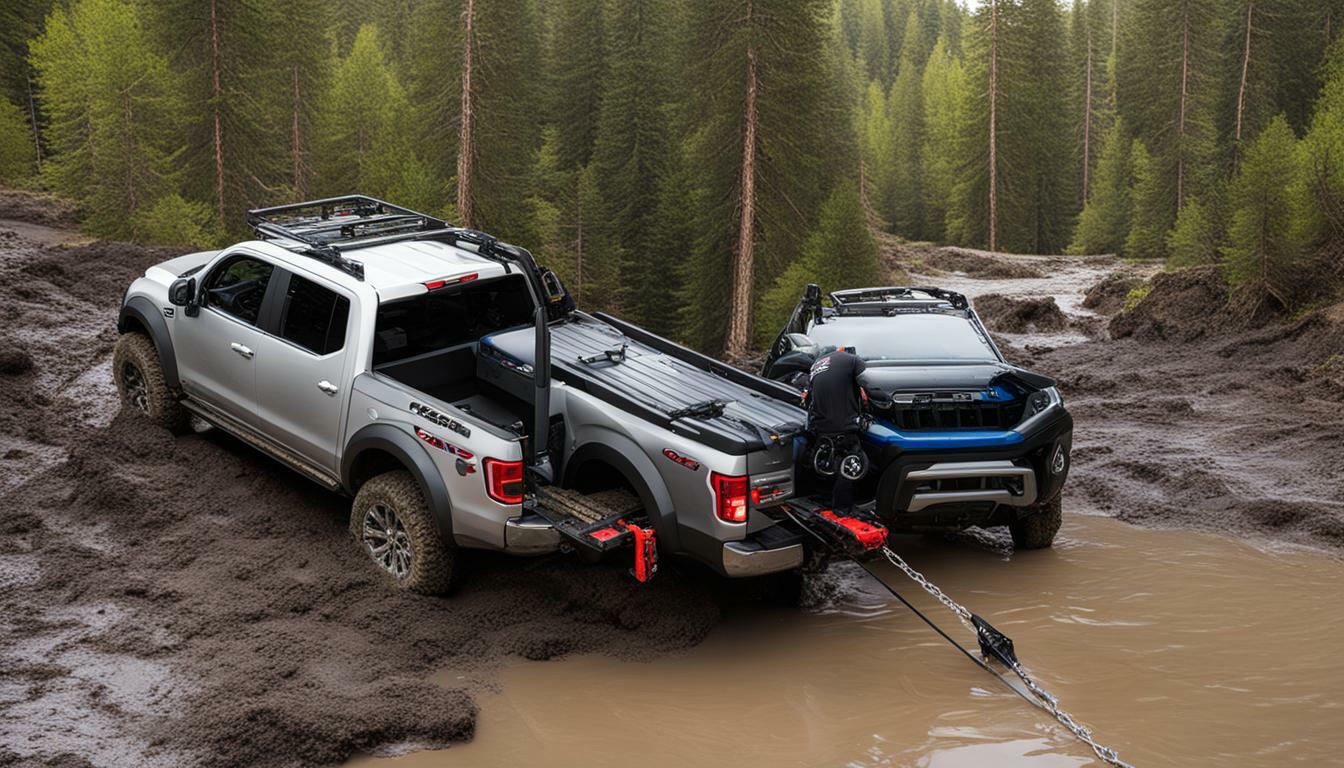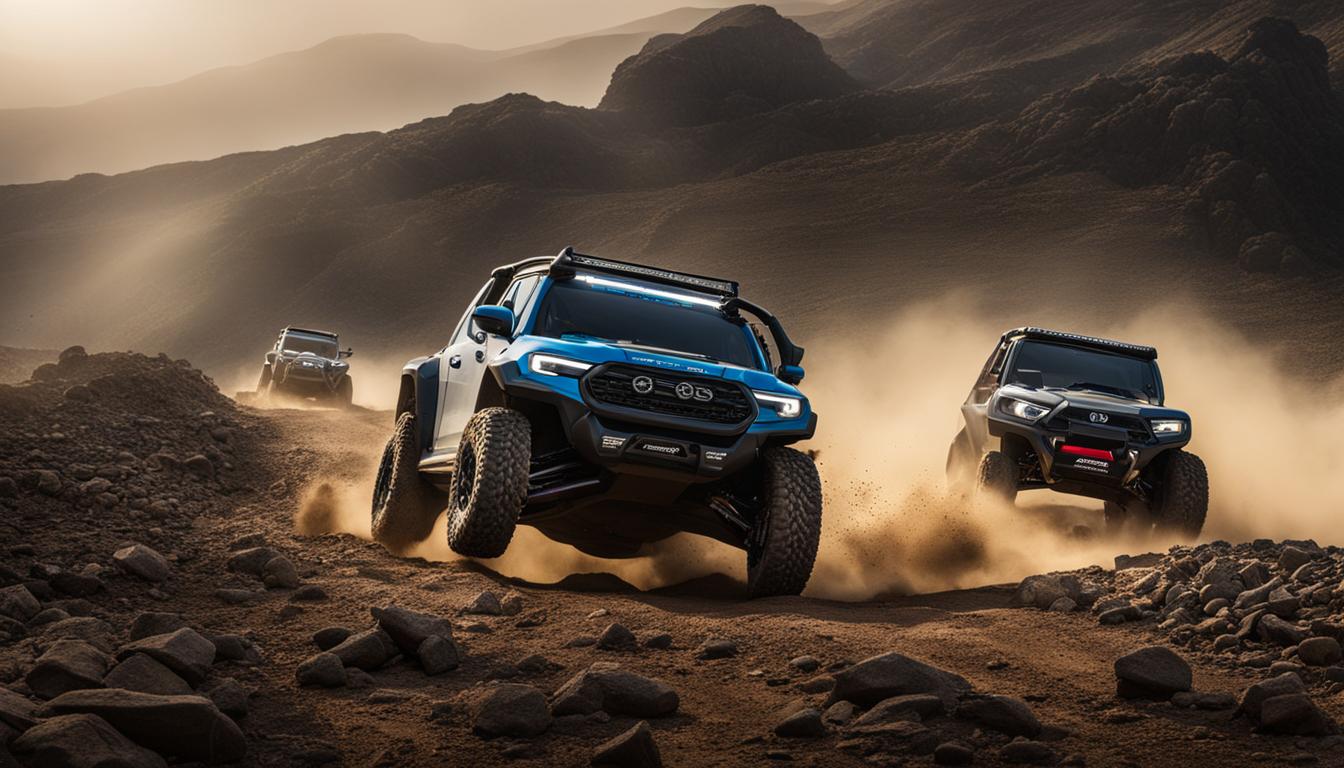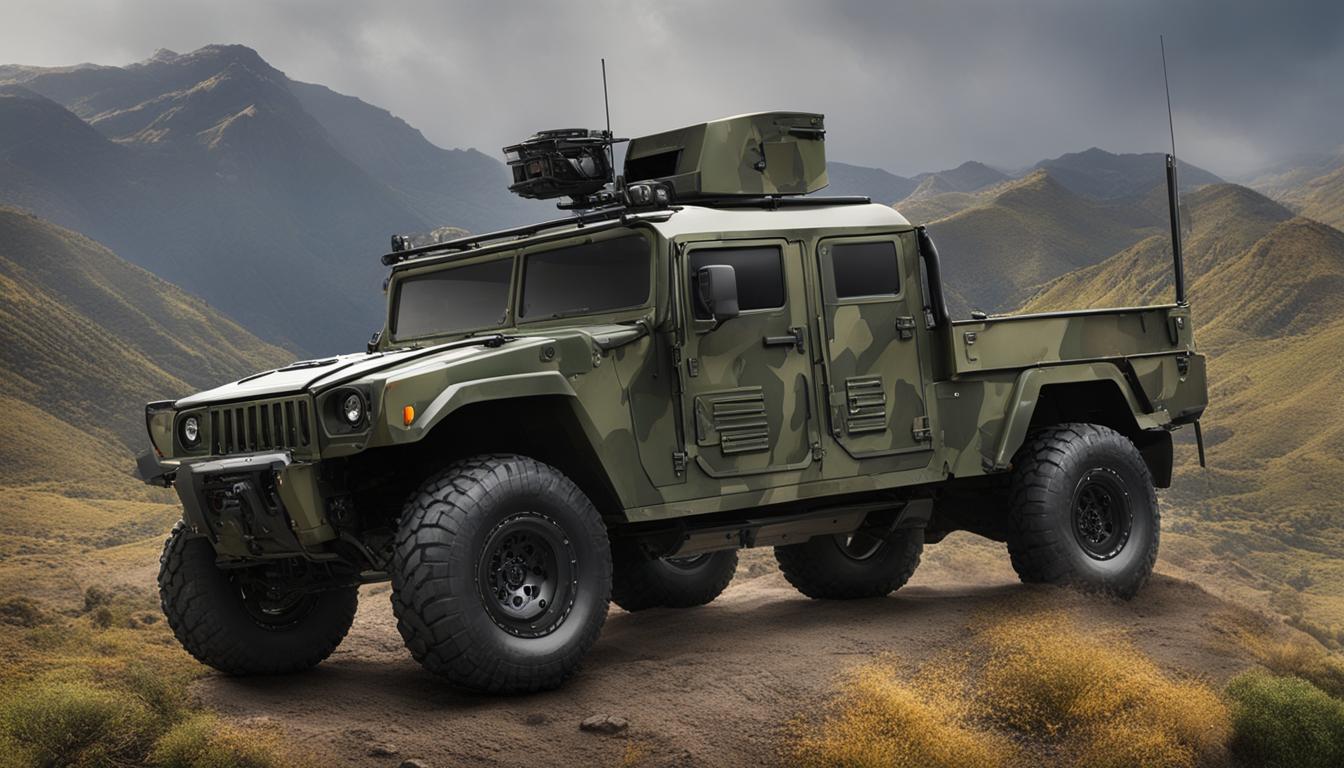Off-road recovery requires the right tools and equipment, and among the options available, recovery boards and winches are two popular choices. When venturing off the beaten path, it is important to be prepared for unforeseen situations that may require assistance in getting your vehicle back on track. Knowing the difference between recovery boards and winches can help you make an informed decision about which option is best for your off-road adventures.
Recovery boards, also known as traction boards or sand ladders, are designed to provide extra traction in situations where loss of traction is a problem. These boards can be placed under the tires of a stuck vehicle to help it gain traction and prevent spinning wheels. Recovery boards are lightweight, portable, and easy to use, making them a popular choice for off-road enthusiasts.
On the other hand, winches are self-recovery devices that provide more power and stability. They are typically mounted to the front or rear of a vehicle and use a cable or rope to pull the vehicle out of difficult terrain. Winches require installation and can vary in size and capacity, allowing them to be used for a range of recovery tasks. They are particularly useful for pulling heavy objects or anchoring a vehicle in place.
Key Takeaways:
- Recovery boards are designed to provide traction in situations where loss of traction is a problem.
- Winches are self-recovery devices that provide more power and stability.
- Recovery boards are lightweight, portable, and easy to use.
- Winches require installation and can vary in size and capacity.
- The choice between recovery boards and winches depends on individual needs and preferences.
What are Recovery Boards?
Recovery boards, also known as traction boards, are an essential recovery tool for off-road enthusiasts, providing the much-needed traction in challenging terrains. These boards are designed to offer additional grip when a vehicle loses traction, preventing it from getting stuck. Made from durable materials like high-density polyethylene, recovery boards are able to withstand the rugged conditions of off-road adventures.
The surface of recovery boards is covered with ridges or teeth that dig into the ground, allowing the tires to regain traction and move forward. These ridges also help to prevent the boards from sinking into soft or muddy surfaces, making them highly effective in a variety of conditions. Recovery boards are lightweight and easy to carry, making them a convenient accessory to have on any off-road excursion.
When positioned in front or behind the stuck wheels, recovery boards provide a solid surface for the tires to grip onto. Once the vehicle gains traction, it can safely maneuver itself out of difficult situations. Recovery boards are suitable for a range of vehicles, from 4x4s to motorcycles, and they can be used in different recovery techniques, such as the rocking motion or simply providing the necessary traction to get moving again.

Overall, recovery boards are an indispensable tool for off-road recovery methods. They offer a quick and effective solution when loss of traction occurs, allowing off-road enthusiasts to confidently tackle challenging terrains without the fear of getting stuck. Their lightweight design, durability, and ease of use make them a must-have accessory for any off-road adventure.
How to Use Recovery Boards
To successfully use recovery boards, proper placement and technique are key factors for a safe and successful off-road recovery. Recovery boards, also known as traction boards or sand ladders, are designed to provide extra traction when vehicles encounter slippery or loose terrain. They are lightweight, portable, and easy to use, making them a popular choice among off-road enthusiasts.
When using recovery boards, it’s important to assess the situation and determine the best placement for maximum traction. Start by clearing any loose debris or obstacles from under the tires. Then, position the recovery boards parallel to the tires. Ensure that the boards are securely placed, providing support and stability.
Once the recovery boards are in place, slowly drive onto them, maintaining a steady momentum. The boards will provide the necessary traction to allow the tires to grip and regain traction. It’s crucial to proceed with caution and avoid sudden acceleration or aggressive steering maneuvers. As the vehicle gains traction, continue to move forward or backward until you have safely cleared the obstacle or regained traction on the slippery surface.
Remember to always keep off-roading accessories, such as gloves, shovel, and towing strap, handy when using recovery boards. These tools can aid in the recovery process and ensure a safe and efficient off-road adventure. Now that you know how to use recovery boards effectively, you can confidently tackle challenging terrains and enjoy your off-road experiences to the fullest!
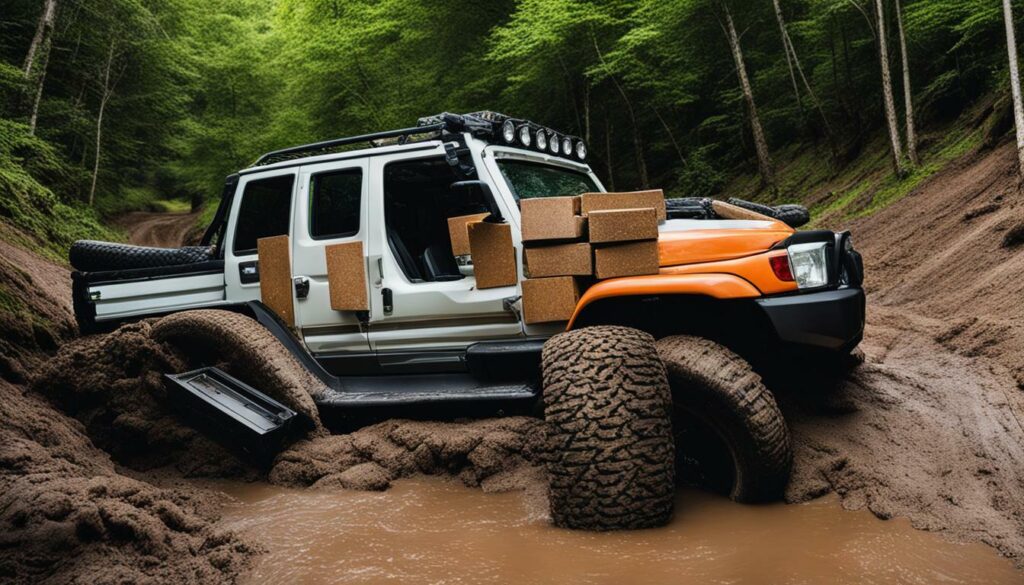
| Advantages | Disadvantages |
|---|---|
| Lightweight and portable | Not suitable for all situations (e.g., deep mud or water) |
| Easy to use with minimal setup | May require multiple attempts in challenging conditions |
| Can be used in various off-road terrains | Limited weight capacity |
| Affordable compared to winches | Can potentially damage recovery boards if not used correctly |
What is a Winch?
A winch is a powerful recovery device that offers a self-recovery option and the ability to pull heavy objects in off-road situations. It is a versatile tool that can be a lifesaver when faced with challenging terrains or getting stuck. With a winch, you have the power to pull your vehicle out of mud, sand, or other obstacles that may hinder your off-road adventure.
Unlike recovery boards, which provide traction, a winch operates by using a motor and a drum to wind a cable or rope. The cable is attached to an anchor point, such as a tree or a sturdy object, and as the winch is activated, it pulls the vehicle towards the anchor point, allowing for a safe recovery.
Winches come in different sizes and capacities, allowing you to choose the one that best suits your needs. Whether you need to pull your vehicle out of a difficult situation or haul heavy objects, a winch is a valuable tool to have in your off-road recovery equipment arsenal.

Using a Winch Safely
- Always inspect the winch and cable before each use to ensure there are no signs of damage
- Use appropriate safety equipment, such as gloves and eye protection, when operating the winch
- Make sure the anchor point is secure and capable of withstanding the pulling force
- Follow the manufacturer’s instructions for proper winch operation and maintenance
- Stay clear of the winch cable or rope while it is under tension to avoid injury
When used correctly and with caution, a winch can be a reliable and effective tool for off-road recovery. It provides the necessary power to overcome challenging obstacles, ensuring a safe and successful recovery.
| Recovery Boards | Winches |
|---|---|
| Provide traction | Offer self-recovery and pulling power |
| Lightweight and portable | Vary in size and capacity |
| Easy to use | Require installation and maintenance |
| Ideal for situations with loss of traction | More suitable for pulling heavy objects or anchoring |
Installing and Using a Winch
Installing a winch correctly and knowing how to use it properly can make a significant difference in off-road recovery situations. A winch is a powerful recovery device that can be a lifesaver when your vehicle is stuck in difficult terrain or when you need to pull heavy objects. To ensure a successful installation, follow these steps:
- Choose a suitable mounting location: Look for a strong and sturdy mounting point on your vehicle, such as the front or rear bumper. Make sure the winch is properly aligned and centered.
- Attach the winch: Securely bolt the winch to the mounting location using the provided hardware. Ensure that all bolts are tightened to the manufacturer’s specifications.
- Connect the power: Follow the manufacturer’s instructions to connect the winch to your vehicle’s battery. Use proper-sized cables and ensure a solid connection.
- Test the winch: Before heading out on your off-road adventure, test the winch to ensure it is working correctly. Engage and disengage the winch under load to familiarize yourself with its operation.
Once the winch is properly installed, it’s important to know how to use it effectively. Here are some tips:
- Use a snatch block: A snatch block can increase the pulling power of the winch by changing the direction of the cable. It’s a versatile tool that can be used in various recovery situations.
- Keep the cable straight: When winching, make sure the cable is spooled out straight without any kinks or tangles. This will minimize the risk of the cable snapping or getting damaged.
- Use proper winching techniques: Always winch in short, controlled bursts, allowing the winch motor to cool down between pulls. Avoid overloading the winch and be mindful of the winching capacity.
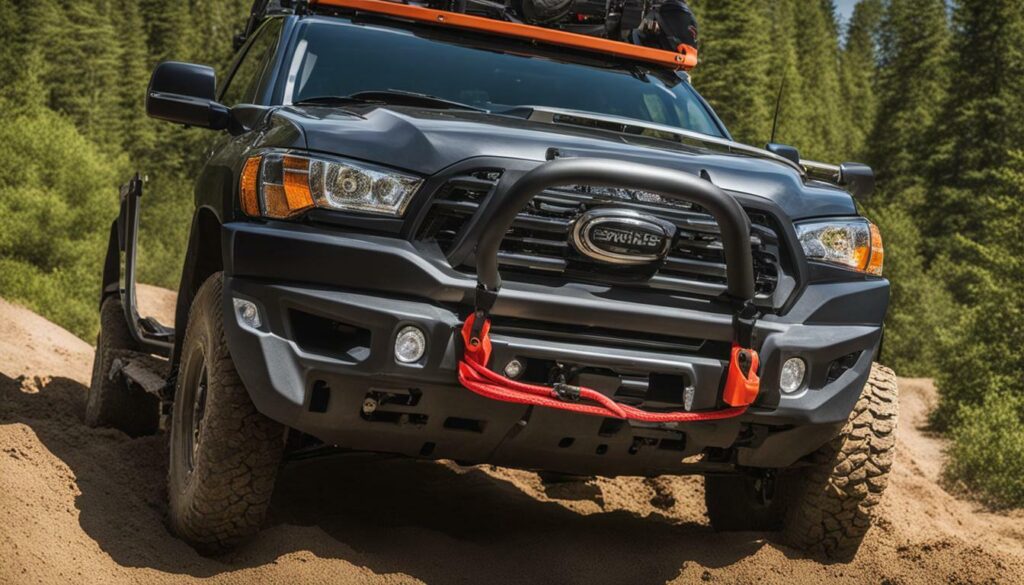
Remember, using a winch requires proper training and caution. It’s essential to read and understand the manufacturer’s instructions before attempting winching operations. Safety should always be your top priority in off-road recovery situations.
| Pros of Using a Winch | Cons of Using a Winch |
|---|---|
| Powerful and stable | Requires installation |
| Can pull heavy objects | Varying sizes and capacities |
| Can be used for self-recovery | Not as portable as recovery boards |
Choosing Between Recovery Boards and Winches
When deciding between recovery boards and winches, it’s important to consider various factors to determine which option best suits your specific off-road recovery needs. Recovery boards are a lightweight and portable solution that provides extra traction in situations where loss of traction is a problem. They are designed to prevent vehicles from spinning their tires and are effective in muddy, sandy, or snowy terrains. The simplicity and ease of use make recovery boards a popular choice among off-road enthusiasts.
On the other hand, winches offer more power and stability for self-recovery and pulling heavy objects. They are typically mounted on the front or rear of a vehicle and are operated with the help of a remote control. Winches come in different sizes and capacities, allowing you to choose one that matches your specific needs. They can be an essential tool for getting your vehicle out of deep mud, steep inclines, or other challenging terrains.
Cost, portability, power, and ease of use are important factors to consider when making your decision. Recovery boards are generally more affordable and require minimal installation, making them a convenient choice for occasional off-road adventures. On the other hand, winches can be more expensive and require professional installation, but they offer greater versatility and can handle more demanding recovery situations.
Ultimately, the choice between recovery boards and winches depends on your individual preferences and the type of off-road recovery scenarios you anticipate. If you prioritize simplicity, portability, and affordability, recovery boards may be the right option for you. However, if you require a more powerful and versatile recovery tool, a winch could be your best bet. Consider your specific needs, research the options available, and make an informed decision to ensure a safe and successful off-road recovery experience.
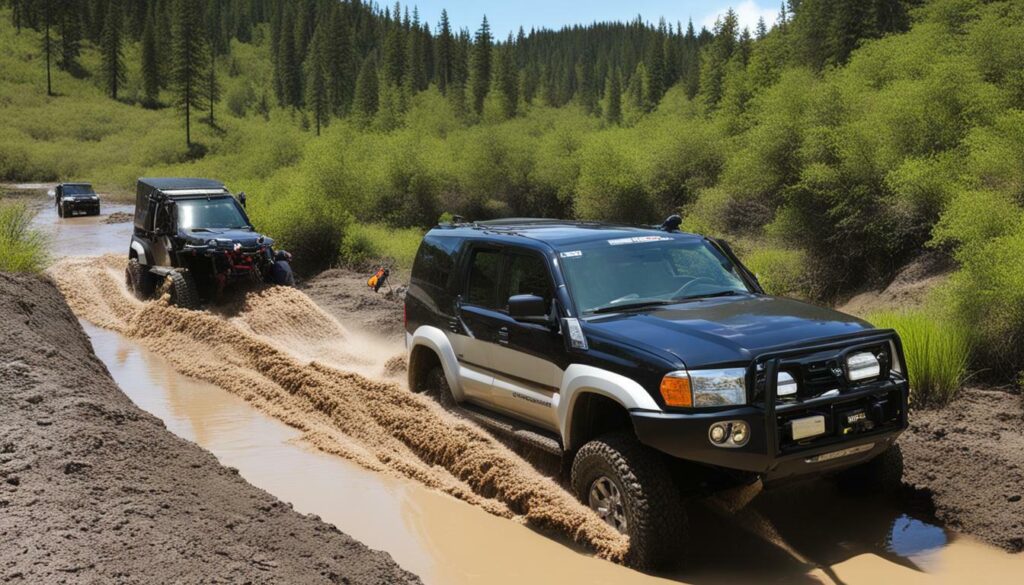
Conclusion
In conclusion, recovery boards and winches offer different benefits and advantages for off-road recovery, and choosing the right equipment can greatly enhance your off-roading adventures.
Factual data: The difference between recovery boards and winches for off-road recovery is that recovery boards are specifically designed for traction and are useful in situations where loss of traction is a problem. They provide extra traction in places where vehicles may otherwise spin their tires. Recovery boards are lightweight, portable, and easy to use.
On the other hand, winches are self-recovery devices that provide more power and stability. They are attached to the vehicle and can be used to pull the vehicle out of difficult terrain. Winches require installation and can vary in size and capacity. They are more suitable for pulling heavy objects or anchoring something in place.
Overall, the choice between recovery boards and winches depends on individual needs and preferences. Both have their pros and cons, and it’s important to consider factors such as cost, portability, power, and ease of use when deciding which option to choose.
FAQ
What is the difference between recovery boards and winches?
Recovery boards are specifically designed for traction and provide extra traction in situations where loss of traction is a problem. They are lightweight, portable, and easy to use. On the other hand, winches are self-recovery devices that provide more power and stability. They are attached to the vehicle and can be used to pull the vehicle out of difficult terrain.
What are recovery boards?
Recovery boards are tools specifically designed for off-road recovery. They are used to provide extra traction in places where vehicles may otherwise spin their tires. They are lightweight, portable, and easy to use.
How do I use recovery boards?
To use recovery boards, you need to properly place and position them under your tires. This will help provide the necessary traction to get your vehicle unstuck. It’s important to follow proper techniques and make sure you have the necessary off-roading accessories for a successful recovery.
What is a winch?
A winch is a self-recovery device that is attached to a vehicle and used to pull it out of difficult terrain. It provides more power and stability compared to recovery boards and is suitable for pulling heavy objects or anchoring something in place.
How do I install and use a winch?
Installing a winch requires proper installation and maintenance to ensure safe and effective usage. It is typically mounted on the front or rear of a vehicle and can be operated using a remote control or a wired switch. It’s important to follow the manufacturer’s instructions and guidelines for installation and usage.
How do I choose between recovery boards and winches?
The choice between recovery boards and winches depends on individual needs and preferences. Factors to consider include cost, portability, power, and ease of use. Recovery boards are more suitable for providing traction in situations where loss of traction is a problem, while winches are better for self-recovery and pulling heavy objects.
 Skip to main content
Skip to main content